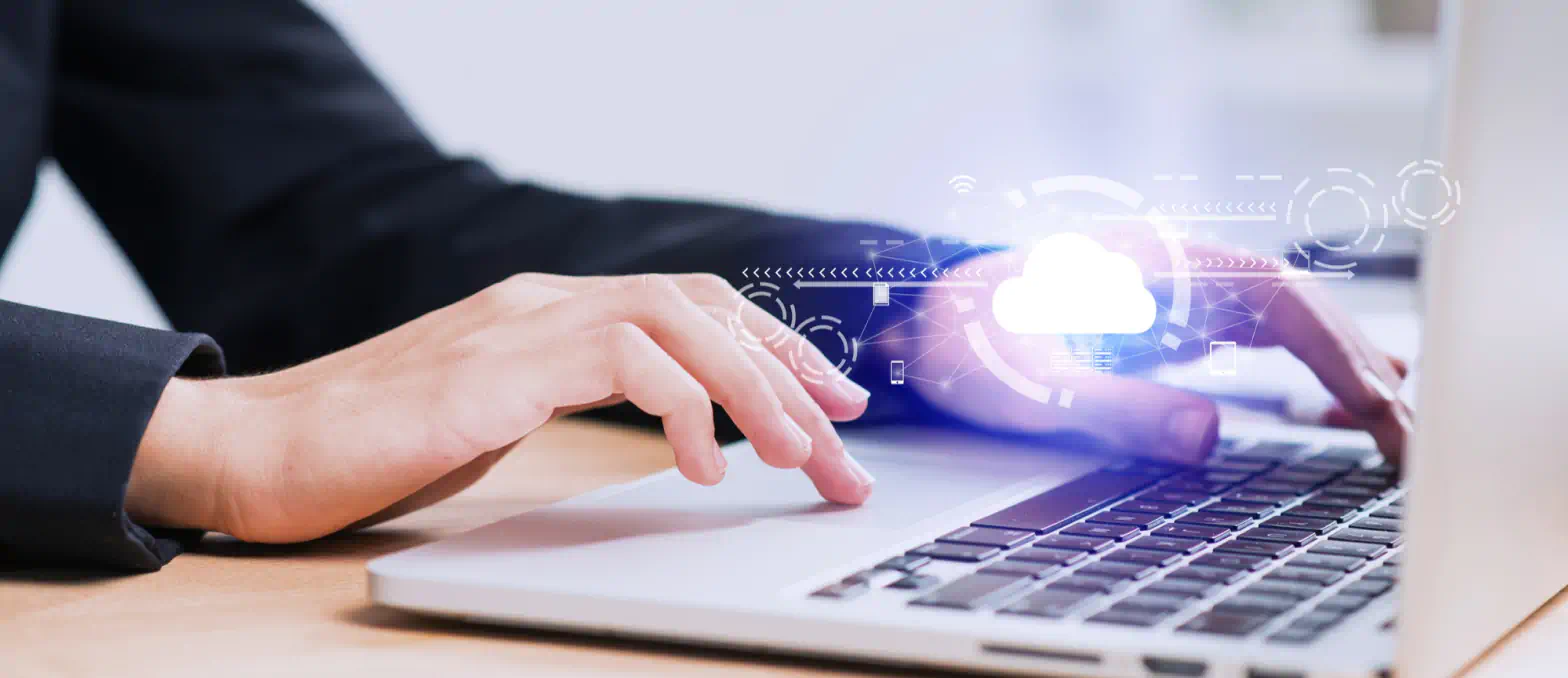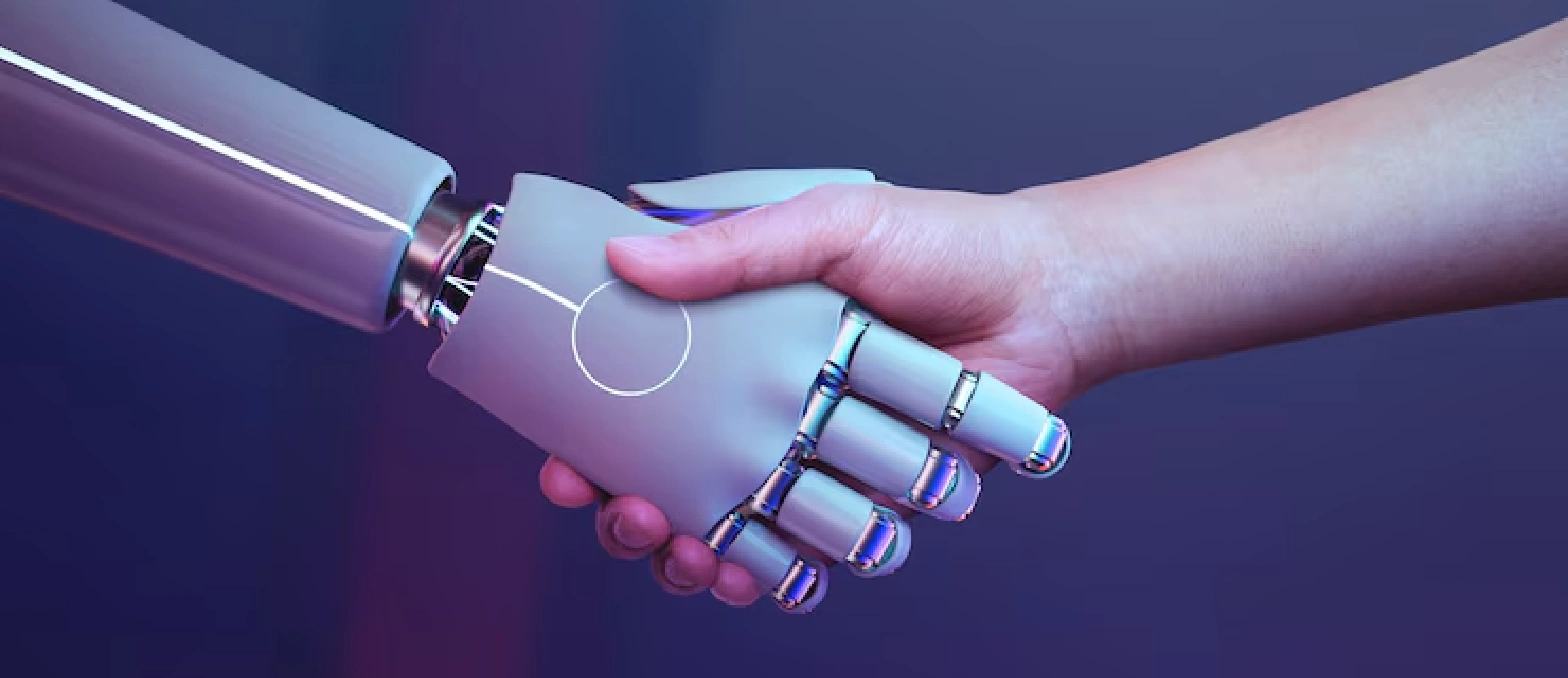Table of Contents
Blog Summary
This post discusses how computer vision enhances the capabilities of traditional robotic process automation (RPA). It can read and understand screen content contextually, comprehend data from images, scanned documents, and videos just as a human would, and handle unclear image data, among other tasks. New to RPA? Before checking out this blog, you can first get an overview of what RPA is and how RPA simplifies processes and boosts efficiency.
Getting Started With Computer Vision in RPA
RPA, short for Robotic Process Automation, is a technology that automates repetitive tasks with the help of software bots capable of mimicking human interactions, such as data entry, navigating applications, and file manipulation, which would otherwise require human employees and are prone to significant errors.
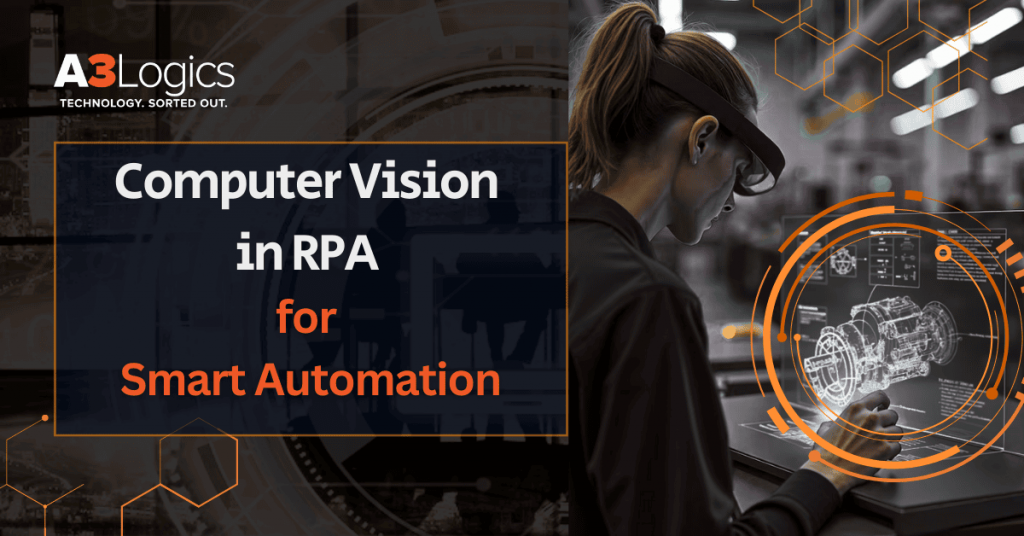
The significance of RPA can be judged by the fact that almost 46% of IT management leaders employ RPA, and 38% of marketing leaders are dependent on RPA to improve daily operations.
Traditional RPA struggles with unstructured data, complex tasks and dynamic interfaces. Smarter automation; in the form of computer vision in RPA can handle these challenges by not just reading the data but also understanding it just like a human.
In RPA, computer vision refers to the ability of RPA bots to see and interpret visual information. AI computer vision enables RPA to see every element of an interface. It enables you to build a vision-based automation that can run on most virtual desktop interface (VDI) environments, regardless of the operating system or framework.
Due to the significant benefits of computer vision in enhancing traditional RPA, the global computer vision market was estimated at $19.82 billion in 2024 and is expected to grow at a CAGR of 19.8% from 2025 to 2030.
Understanding Computer Vision in the Context of RPA
Let’s quickly have a look at how computer vision enhances the capabilities of traditional robotic process automation (RPA) and what the differences are between traditional and computer vision-enhanced RPA.
i. How does Computer Vision complement traditional rule-based RPA
- Traditional RPA struggles with unstructured data, for instance, emails, scanned documents, PDFs, etc. Computer vision helps bots interpret this data easily.
- Computer vision removes the dependence on API systems for data extraction and helps deliver accurate outcomes.
- With computer vision-enabled RPA, traditional bots can now make decisions based on context. They are not dependent on pre-defined rules.
- To enhance the adaptability of traditional RPAs, computer vision helps bots handle dynamic visual elements.
- Computer vision in robotic process automation minimizes the need for human oversight by automating tasks that require visual understanding and interpretation.
ii. Key differences between Computer Vision-enhanced RPA and traditional RPA bots
| Aspect | Traditional RPA Bots | Computer Vision-Enhanced RPA |
| Interface Handling | Can only interact with structured elements, such as buttons, APIs, and fields. | More efficient in interacting with screen elements, even in image-based VDIs, for example, Citrix, and UIs. |
| Data Type Support | Dependence on structured data from web forms or databases. | Can extract data contextually from unstructured data sources such as scanned documents, PDFs, images, etc. |
| Flexibility | May require recoding if there are changes in UI or layout. | Perceives visual patterns, and adapts to them as such doesn’t require constant updates |
| Intelligence Level | Dependence on predefined scripts and rules. | It utilizes AI/ML to understand patterns, screen context, and make informed decisions. |
| Setup Complexity | It can be built fast, but it needs more maintenance. | It may take longer to train, but eventually it’ll need low maintenance, and it can scale fast, providing more reliable outcomes. |
Why Combine Computer Vision with RPA?
Now that we have an overview of how computer vision in robotic process automation makes it different from traditional automation, let’s discuss some of the core benefits of computer vision-enhanced RPA. Here we’ll also evaluate some of the probable challenges –
> Benefits of Computer Vision:
1. Reduction In Human Workload
Computer vision RPA development can automate various repetitive tasks as such it can reduce human workload as well as improve efficiency. It can automate tasks like packaging, sorting, inspection, and others, eliminating the need of manual labor and thereby saving costs.
2. Predictive Maintenance
AI-powered computer vision for RPA enables automated visual analysis of equipment and processes. It helps identify any issues before they escalate and lead to major failures. To address such problems, maintenance tasks can be scheduled, and maintenance costs can be lowered.
3. Faster Data Processing
Through computer vision RPA development, computer vision systems can process data at a significantly faster rate than humans and in an error-free manner. This enables quicker responses and quicker decision-making.
4. More Accurate Results
AI and ML algorithms in computer vision for RPA not only read the image data but also analyze it with high precision, resulting in more accurate results, especially in critical tasks involving quality control and other areas where errors are non-negotiable.
5. Enhanced Security
Computer vision can enhance security by leveraging the ability to analyze visual data in real-time. This lets faster and more accurate threat detection. This technology helps track movements, identify anomalies, and even recognize faces, ultimately leading to more effective security measures.
6. Better Customer Experience
Computer vision in RPA can be used to enhance customer experience in many ways. For example, RPA bots can analyze customer feedback from various sources; to improve customer care processes. Computer vision can then be used to extract information from ID documents, streamlining the onboarding process.
> Use cases where Computer Vision is critical in automation
1. Scanned Document Processing
AI computer vision technology in RPA makes document processing simple. It identifies key elements, and interprets visual cues to transform scanned documents into structured and searchable data. This helps improve workflow automation and facilitate faster decision-making.
2. Legacy System Navigation Via Screens
To interact with older software (legacy systems) where APIs are not available, computer vision reads data directly from the screen interface in Citrix or other virtual desktop interfaces (VDIs).
3. Insurance Claim Automation
Computer vision reads image-based or scanned documents, and extracts fields like dates, invoice numbers, and total amounts and feeds them into finance systems automatically.
4. Healthcare Record Management
Using computer vision, images and other visual data, such as patient records, medical images, and videos, can be analyzed. Computer vision in healthcare automates the extraction of data from videos and pictures – such as vital signs, patient demographics, and surgical details.
5. Managing Quality Checks
In production lines across various industries, computer vision-based robotic process automation can be used to inspect hundreds or even thousands of pieces quickly. In computer vision based RPA, algorithms are trained on preselected criteria, the quality of the output can be checked thoroughly.
> Limitations of traditional RPA in handling unstructured data
Traditional RPA faces limitations when handling unstructured data due to its reliance on well-defined, structured processes and rules. Here are some of the limitations of traditional RPA in handling unstructured data –
1. Lack of Contextual Understanding
Traditional RPA bots are primarily rule-based and lack the ability to understand the context or meaning of data; it’s difficult for them to adapt to variations in unstructured data. As a result, traditional RPA bots are less suitable for tasks that require human reasoning.
2. Difficulty in Handling Complexities
The traditional RPA struggles to handle variations in content, format, and structure since it is difficult for it to adapt to these complexities. It is therefore less reliable in environments with a high degree of variability.
3. Challenges in Data Extraction
Since unstructured data comes in various formats, templates are needed for each format. It is for this reason that RPA may require other technologies, such as Natural Language Processing or OCR, to handle unstructured data.
4. Need for Human Intervention
To resolve errors, handle variations, human involvement may be needed to handle RPA’s limitations with unstructured data. This can increase the workload on human employees.
5. Scalability Issues
Traditional RPA bots can be challenging to adapt and maintain as data formats and processes evolve, particularly when handling unstructured data. This can lead to complexity and increased costs in maintaining RPA deployments.
Key Use Cases of Computer Vision in RPA
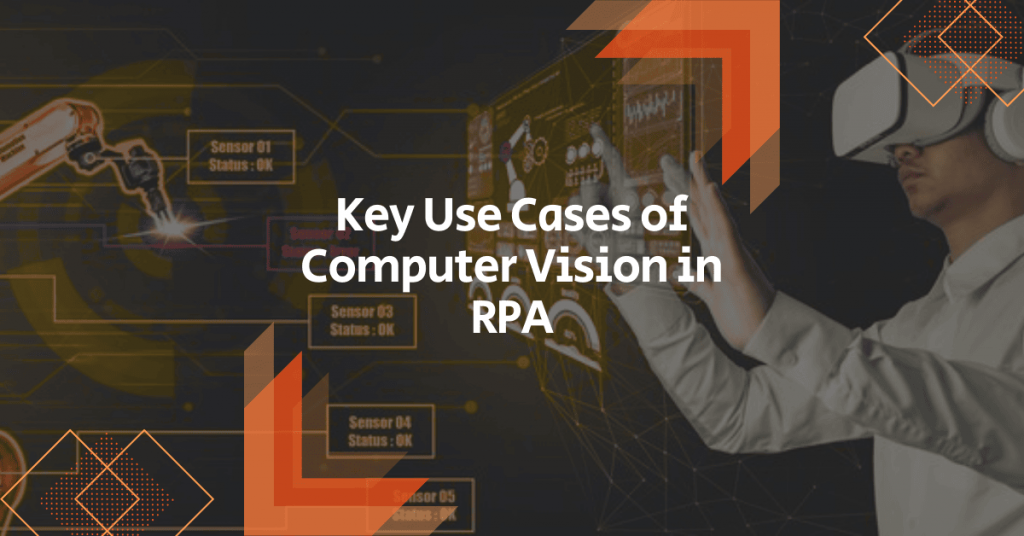
The use of computer vision in RPA is becoming increasingly popular across various spheres such as –
1. Document Processing and Data Extraction
Computer vision in RPA enhances raw images by performing noise reduction and normalization. It then divides the documents into regions – tables, text, and graphics for a more focused processing. It pinpoints essential elements like text blocks and logos. To further understand document layouts, it identifies boundaries and unique features. Finally, it uses deep learning algorithms to adapt to diverse formats and refine recognition.
2. Screen Element Recognition
Computer vision in robotic process automation utilizes AI and machine learning models to recognize and interpret screen elements. It enables robots to identify and interact with UI elements, such as buttons, text fields, images, and dropdowns, without relying on traditional image matching. Computer vision also incorporates OCR (Optical Character Recognition) and fuzzy text recognition to identify text within the UI. A multi-anchoring system helps understand the relationship between each of the detected elements and creates a unique descriptor for each.
3. Healthcare and Insurance
Processing applications in the healthcare and insurance sector is one of the best computer vision in RPA examples. Healthcare and insurance companies have to process hundreds of claims every single day. Computer vision in RPA enables the digitization of forms and the extraction of critical information, including policy numbers, patient data, incident details, and claim amounts. By automating such tasks, the company can reduce processing times, improve customer satisfaction, and lower error rates.
4. Retail and Supply Chain
In retail, computer vision in robotic process automation can monitor shelf stock levels in real-time. It can automatically prompt when the stock is low and when there is a need to restock items. It can quickly tally products, streamline customer experience, and even monitor customer purchase patterns. Computer vision and robotic process automation can streamline the supply chain by identifying inconsistencies and defects, thereby speeding up processes such as sorting and packaging items, reducing labor costs, and facilitating quality checks.
5. Finance
AI computer vision in RPA can handle complex tasks such as validating signatures on documents for fraud detection. The OCR systems can help handle labor-intensive tasks that are prone to errors and delays. Computer vision in RPA can help automate intricate processes such as credit risk assessment, evaluating a borrower’s likelihood of defaulting on a loan. All in all, AI computer vision in RPA can help in analyzing market trends and making proactive decisions.
Benefits of Smart Automation with Computer Vision
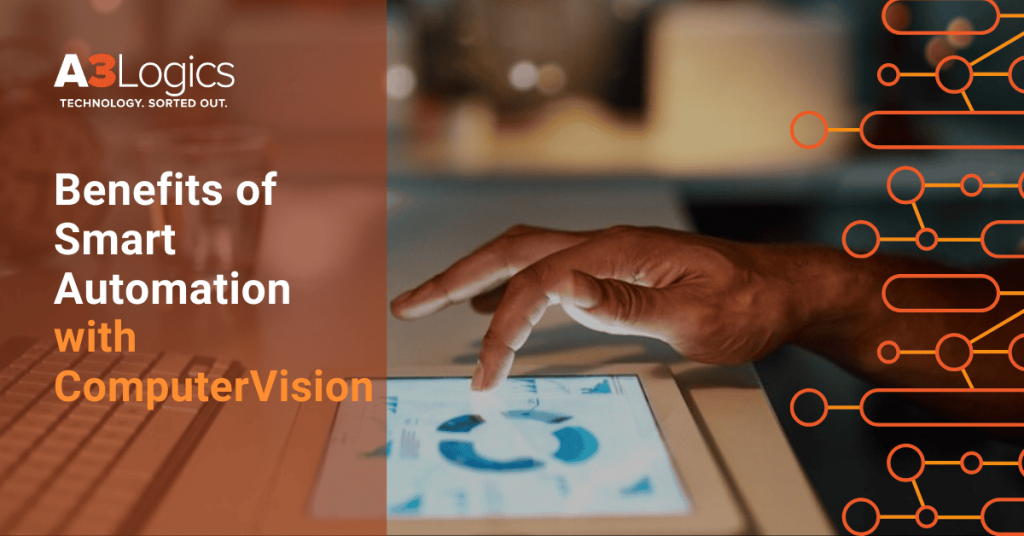
Still pondering upon why use computer vision for your traditional RPA bots, these benefits might convince you –
1. Increased automation coverage
Computer vision in robotic process automation facilitates broader and deeper testing, thereby enhancing software quality and reducing errors. AI algorithms in computer vision for RPA can analyze user interactions and identify common patterns, enabling the generation of more comprehensive test cases that accurately represent real-world usage. As a result, the effectiveness of test results can be maximized, leading to fewer errors in the resulting product.
2. Better scalability and ROI
Smart automation with computer vision offers better scalability and increased ROI, as it enables businesses to improve efficiency, automate tasks, and reduce costs, ultimately leading to a higher return on investment. Businesses can integrate computer vision systems into their existing workflow and expand their use. The systems can handle large workloads without requiring significant investments in infrastructure. With minimal human intervention, computer vision can identify improvement areas and reduce costs associated with labor, materials, and errors.
3. Enhanced user interface interaction
AI-powered computer vision in RPA can analyze large user datasets, understand their preferences, and tailor the interface accordingly. This way, it creates a more user-friendly interface. Furthermore, AI can adjust the UI based on dynamic user actions, environmental factors, or context. Additionally, it alleviates cognitive load from users, making the interface even easier to interact with.
4. Reduction in manual errors
In contrast to traditional methods, computer vision in RPA can eliminate the human element of potentially missing small defects or being inconsistent in judgment. It can perform tasks like inventory management in an error-free manner. By automating repetitive tasks, smart automation with computer vision reduces the errors that may occur because of human oversight or fatigue.
5. Seamless integration with AI/ML models
When synced with computer vision and RPA, AI and ML models not only enable the system to see and read information but also learn from it and make better decisions. This means that by integrating AI and ML into computer vision in RPA, automation can handle more complex tasks, adapt to changes easily, and improve overall accuracy.
Challenges and Considerations
Computer vision in robotic process automation is not bereft of challenges. Here are some that should be considered –
i. Accuracy and training data requirements
Labeled and annotated datasets are essential for training successful computer vision models. While general public datasets are easy to find, it might be difficult to find training datasets in certain circumstances. For instance, in the healthcare sector, obtaining patient data can be challenging, especially since patient health data is protected under regulations such as HIPAA.
ii. Integration complexity with legacy systems
Legacy systems are built with older technologies that may be incompatible with modern RPA systems or computer vision algorithms. Furthermore, they are often difficult to modify, lack necessary APIs, and frequently employ different formats, naming conventions, and structures, which can lead to errors and inconsistencies in data processing.
iii. Managing variability in image quality or document structure
Poor image quality, such as low resolution, poor lighting conditions, and distortions, can impair a computer vision system’s ability to interpret and process images. Similarly, diverse documents and layouts can make it difficult for computer vision systems to locate and extract data.
iv. Security and privacy concerns in image data processing
Since computer vision in robotic process automation relies heavily on image data, which might contain sensitive information, it is prone to certain security and privacy concerns. For instance, image data might be leaked through multiple channels, such as unauthorized access, malware, or other means. Computer vision systems per se can be targets of data breaches and hacktivism.
Future Outlook: From Sight to Insight
If you are embracing the smarter robotic process automation, you may also want to go through some future trends and predictions from thought leaders in the domain –
Evolving from basic CV to advanced cognitive automation
What began with simple tasks like reading text from images using basic computer vision capabilities in robotic process automation, Advanced Cognitive Automation now utilizes AI, machine learning, and other advanced technologies to understand content contextually, learn from present and historical data, and make smarter decisions. This way, it can adapt to changes, handle complex tasks, and reduce human intervention.
The role of AI, ML, and NLP in augmenting Computer Vision
Where Artificial Intelligence (AI) provides the overall framework for creating intelligent systems, Machine Learning (ML) lets these systems learn from data and improve their performance over time. Natural Language Processing (NLP) helps bridge the gap between human understanding and computer vision by letting machines process and understand the natural language embedded in videos and images.
Vision of autonomous digital workers with perception capabilities
It’s about equipping autonomous digital workers or robots to perceive, understand, and interact with their environment in a meaningful way, just as a human would. It’s also about eliminating strict selectors and relying autonomously on visual understanding.
Insights from industry thought leaders.
To date, we have explored the capabilities of computer vision in RPA. Now, let’s understand how leaders in this field view their role in smart automation –
- UiPath
In a guide on AI computer vision, UiPath mentioned that –
Instead of relying on selectors, AI computer vision uses OCR, fuzzy text-matching, object detection, and anchoring systems to visually locate elements on the screen. It also utilizes machine learning to identify targeted elements uniquely.
- AIMultiple
Another insight from AIMultiple highlights how computer vision empowers RPA to overcome legacy system barriers –
As far as integrating legacy systems is concerned, computer vision-enabled bots can –
- Easily extract and migrate data between applications
- Connect to different types of software containing legacy and modern cloud applications, and
- Interact with GUI elements.
- Oracle
Oracle, a global leader in cloud technology, stated that RPA, powered by computer vision, leads to cost savings, enhances automation speed, and eliminates errors in repetitive tasks.
Why Choose A3Logics for AI Computer Vision for RPA?
A3Logics is a leading RPA development company that leverages the latest technologies in RPA, like AI and ML to deliver transformative solutions. From optimizing end-to-end workflows to automating mundane tasks, A3Logics helps businesses scale operations and maintain a competitive edge. Let’s quickly have a look at some reasons why you should choose A3Logics for AI computer vision for RPA –
- As a renowned computer vision development company, A3Logics offers a comprehensive range of services across various industries, including object recognition and detection, image segmentation, remote monitoring and surveillance, and more.
- We offer expert AI consulting to help businesses define strategies, identify opportunities, and implement AI technologies effectively.
- We offer a wide range of RPA development services tailored to your business needs.
Conclusion
In this post, we have discussed the various aspects of computer vision-enhanced robotic process automation and how it can benefit businesses and professionals. We have explained how intelligent computer automation can transform traditional RPA by enabling bots to read and understand visual data like humans and further automate tasks, thereby eliminating any scope of delay or errors, regardless of the industry it is deployed in.




